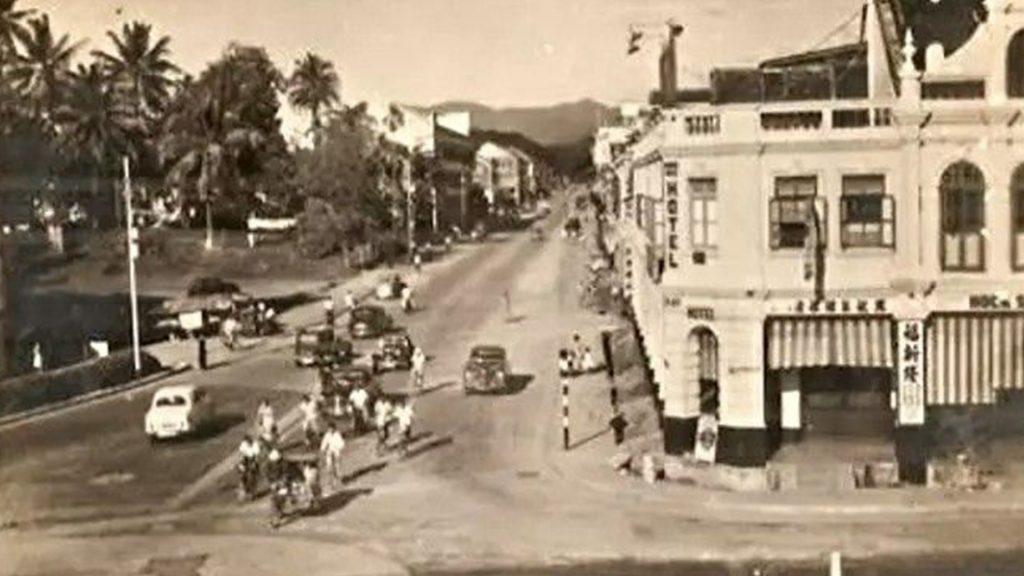
Bukit Bintang Kuala Lumpur 1950s
Our Beliefs
Seventh-day Adventist beliefs are meant to permeate your whole life. Growing out of scriptures that paint a compelling portrait of God, you are invited to explore, experience and know the One who desires to make us whole.
The story goes like this… an American colporteur sold medical books in the Malay Peninsula around the year 1893. Later, whenever colporteurs arrived to work in Singapore, they also worked in Malaya (as Peninsular Malaysia was then called). In fact, colporteurs in the Singapore Mission often went from Singapore to work in Malaya, as Malaya and Singapore, for practical purposes, were one political entity. There were no travel restrictions. One currency was in circulation, and the whole territory was under British administration.
With names and addresses furnished by canvassers, Mrs G. F. Jones carried on missionary correspondence and sent out Adventist literature from Singapore to Malaya. From time to time, the mission office in Singapore received letters of response from various parts of Malaya.
In early 1906, G F. Jones reported that a Chinese family who had accepted the truth in Singapore would be moved to Kuala Lumpur. However, no Adventist missionaries were sent to Malaya until the early part of 1911 when Roy P. States came. By the end of that year, there was a Sabbath school of ten members in Kuala Lumpur. Several of them were Tamil speaking people who had left the Catholic faith.
Evangelistic work was begun in 1911 at Kuala Lumpur, the capital of the Malay states, by R. P. Montgomery, who was succeeded in 1913 by A. R. Duckworth, a convert from Singapore who gave up a good position and left with his family for Kuala Lumpur to carry on the work started by the Montgomerys. He reported that the Tamil literature was a great help in his work. By 1914 G. A. Thompson and his wife went to Malaya; at Kuala Lumpur the first Seventh-day Adventist church in Malaya was organized with 12 members, and also the Federated Malay States Mission was organized that same year.
On July 1, 1914, the Federated Malay States Mission was organized, with George A. Thompson as director, secretary, and treasurer. It consisted of only an organized group of twelve members in Kuala Lumpur. By the time the Malaysian field was organized as the Malaysian Union Conference in mid-February 1917, at Sumber Knox, the membership of the Kuala Lumpur had about doubled. W. T. Knox, treasurer of the General Conference who attended this important meeting, reported in the Review and Herald that the Kuala Lumpur church was composed largely of converts from the Tamil speaking people of India.
However, efforts were later made among the Chinese people, and the composition of the church membership began to swing to that ethnic group. Of the 102 converts baptized during the years 1925 and 1926, nearly all of them were from non-Christian Chinese background.
As early as 1917 Thompson was authorized to use the Harvest Ingathering funds he had on hand to purchase a piece of land in Kuala Lumpur. From then until 1928 actions concerning the erection of a church building at Kuala Lumpur were taken practically every year.
The erection of the first Adventist church building in the Malay States Mission marked the end of the wandering days of the mission office. Since its inception in 1914 until it found a permanent home on Bukit Bintang Road, Kuala Lumpur, in 1927, the mission had set up its office in four or five different locations.
For many years Adventist work was largely confined to Kuala Lumpur and the nearby places. In 1920 a request came from a man at Ipoh for an Adventist preacher to go and teach the message. A Chinese evangelist was sent answer the call. During the August school break of the Singapore Training school that year, Phang Nyuk Thin, head of the Bible Training course of the Chinese department was sent there to help in the new interest. Thompson, also spent many weeks with the Chinese worker. As a result, seventeen people were baptized. Some of the younger people were sent to the training school in Singapore and were later baptized there.
Penang, with a population of about 120,000 in the early 1920s, was the next town in Malaya where permanent Adventist missionaries were sent. After several futile attempts to set u medical practice in the Dutch East Indies, J. Earl Gardner, who arrived in Singapore in early February 1922, decided to make Penang their home, where they would stay for the next twelve years. A recently completed two-story building at 108 Muntri Street was rented at S$250 per month.
On December 12, 1924, the Adventist Mission Clinic opened its doors. On the opening day there were only four patients, but in the remaining nineteen days of the year over 600 patients were treated. From this small beginning the medical work in Penang has grown steadily. Today, Penang Adventist Hospital, which has grown from the Penang Mission Clinic, remains the oldest Adventist medical institution in operation in Far Eastern Division.
In 1925 J. E. Gardner, M.D., established a medical mission in Penang (then part of the Straits Settlements), and soon was treating 1,500 cases every month. This clinic in time grew into the Penang Adventist Hospital.
Although the Penang Adventist Hospital has seen many changes throughout its more than sixty years of operation, the evangelistic aim of the medical work in Penang has ever been foremost in the minds of the medical missionaries. In the early days Gardner held a daily evangelistic service for the patients after clinic hours. Assisting him was Pan Ki Heng, a ministerial worker transferred from Batavia He was succeeded by Ng Hock Thye. In 1926 his brother, Ng Hong Boon, was employed in his stead.
